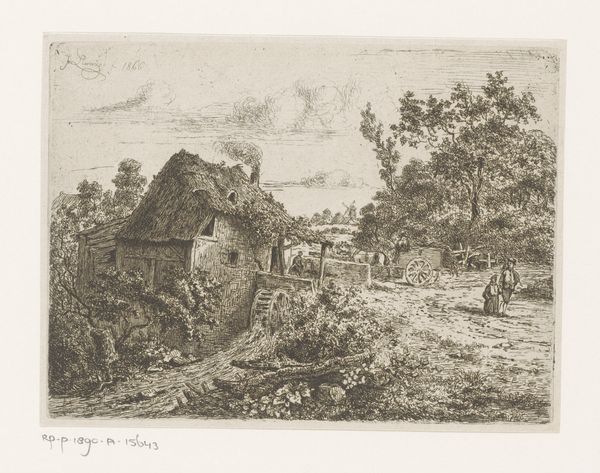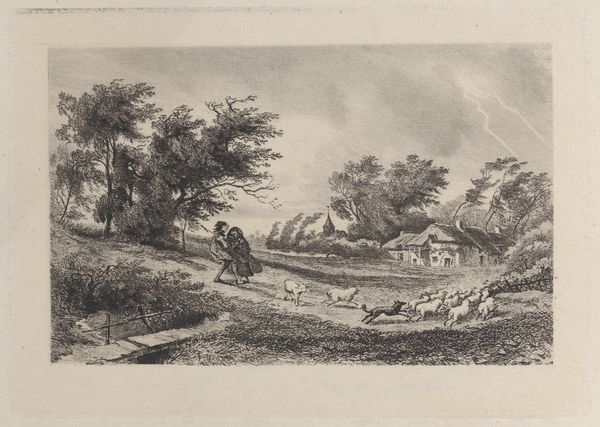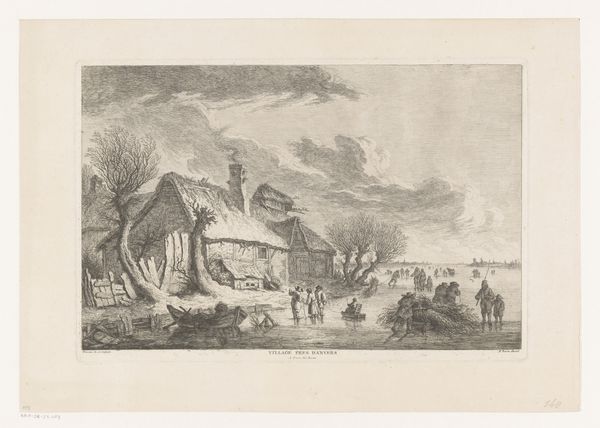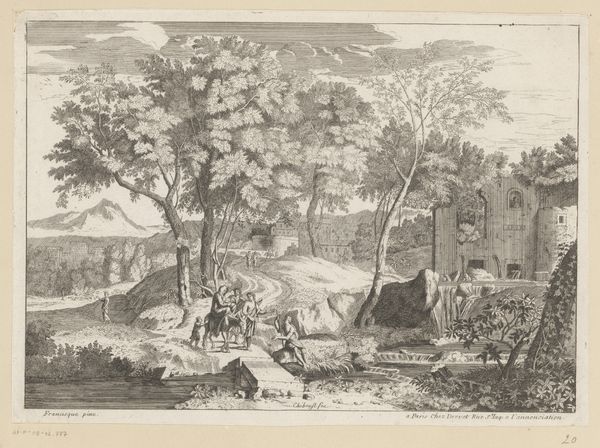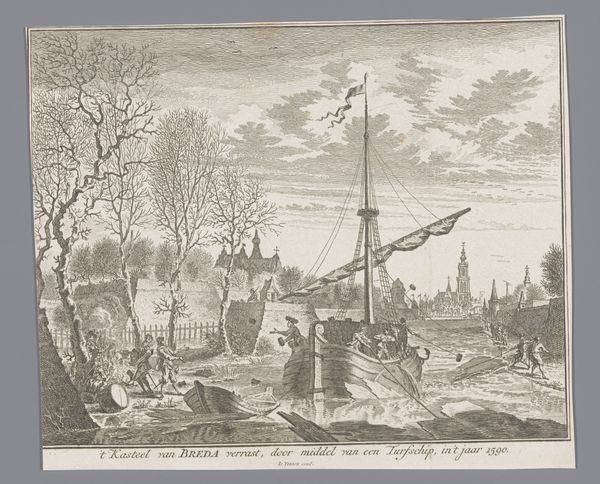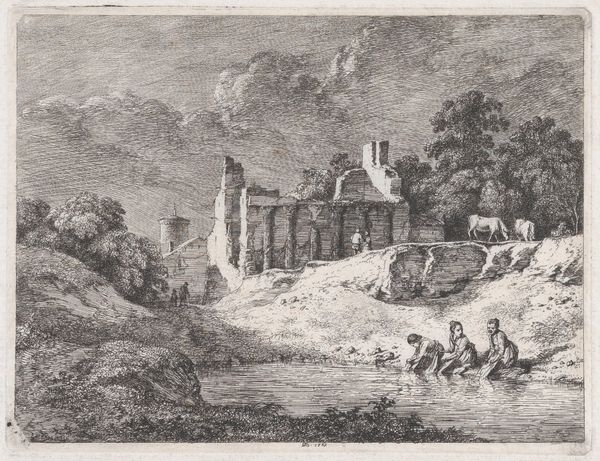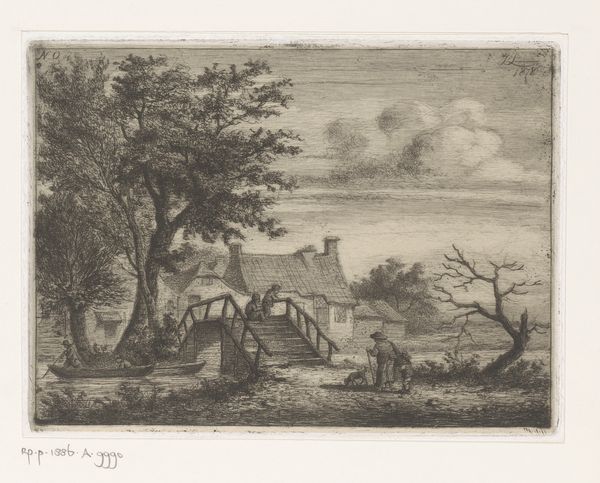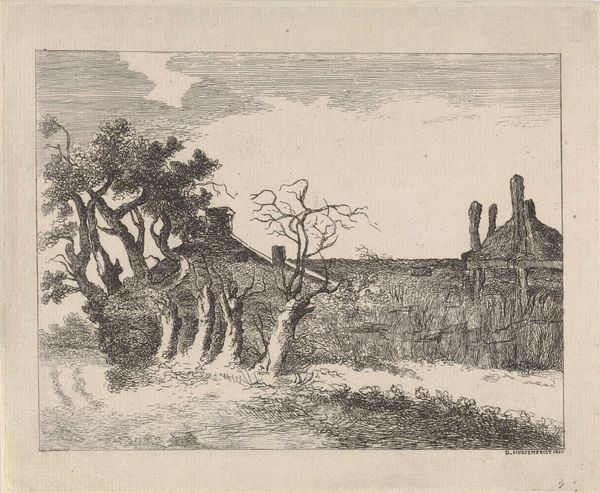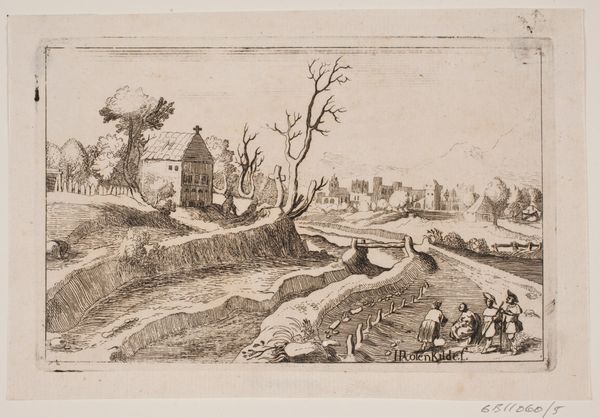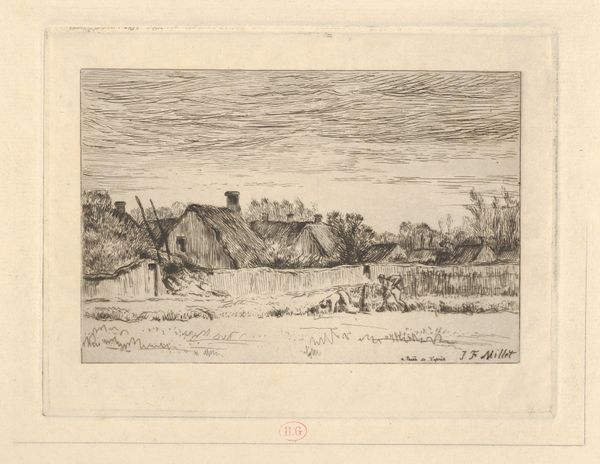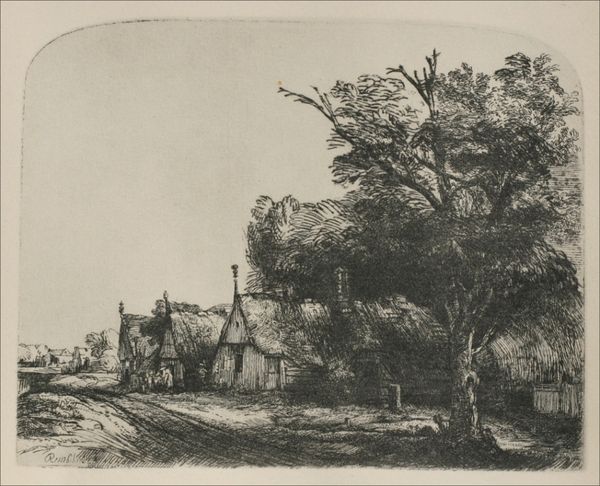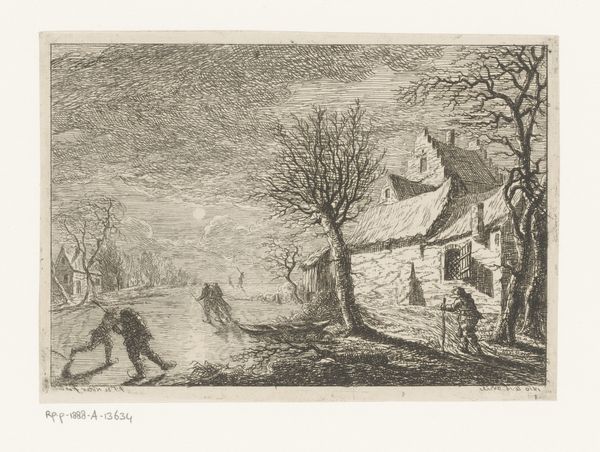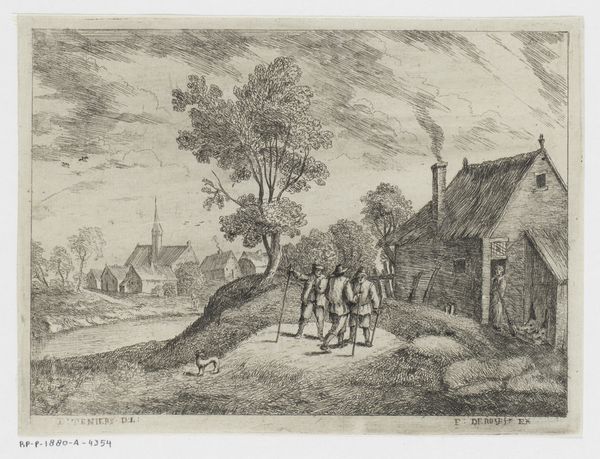
Dimensions: height 133 mm, width 176 mm
Copyright: Rijks Museum: Open Domain
Editor: So, we’re looking at "IJsvermaak," a print made between 1739 and 1804 by Johann Andreas Benjamin Nothnagel, using etching. It gives off this nostalgic vibe, almost like a scene from a storybook with people ice-skating. What do you see in this piece that maybe I'm missing? Curator: Ah, yes, “IJsvermaak”—literally, “Ice Amusement.” Beyond the immediate charm, consider the ice itself. Throughout history, frozen landscapes take on symbolic weight, embodying the cusp between barrenness and potential, between stasis and dynamic energy. Notice how the artist captured that duality? Editor: I hadn’t thought of the ice like that, more just as a backdrop. But I see what you mean. Curator: Look closely at the figures. Observe their interactions and movements; do they remind you of certain archetypes? How are they arranged in relationship to each other, and what emotional narratives do these arrangements imply? This isn't just a scene; it is an index of social bonds in times of leisure. Consider too, the houses depicted here, perhaps indicating that the families are huddled in a small space, eagerly awaiting connection outdoors when weather permits. What do you make of this tension between nature and architecture? Editor: So, you are saying, this print captures memories and community in winter? The image reminds people that warmth and closeness follow barren cold winters. Curator: Precisely! It explores themes of connection, tradition, and enduring human joy amid ever-changing weather. This scene becomes an emblem—a culturally shared memory. In winter, ice has cultural continuity with shared meaning across generations! Editor: I never would have considered all those layers just by looking at it! Now I see how this seemingly simple scene echoes so much more about culture and time. Thanks for that.
Comments
No comments
Be the first to comment and join the conversation on the ultimate creative platform.
